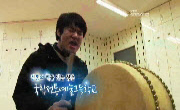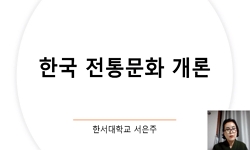With their hands humans create religious objects, with their eyes they view them as part of a religiously meaningful whole, and with their minds and bodies they engage in rites that have decisive symbolic meaning. All these codes, be it material objec...
http://chineseinput.net/에서 pinyin(병음)방식으로 중국어를 변환할 수 있습니다.
변환된 중국어를 복사하여 사용하시면 됩니다.
- 中文 을 입력하시려면 zhongwen을 입력하시고 space를누르시면됩니다.
- 北京 을 입력하시려면 beijing을 입력하시고 space를 누르시면 됩니다.
부가정보
다국어 초록 (Multilingual Abstract)
Because of the European agent's inability to recognize the Khoikhoi language, Khoe, with its many clicks as a linguistic code, this difficult language was often equated with animals sounds and became the natural link between the language of men and that of animals. The Khoikhoi were regarded by the Europeans as the creatures that bridge human and animal domains. The denial of Khoikhoi religion was based on the perceived absence of language, Christian doctrines and practice in the lives of indigenous people.
From the position of mediating true revelation about God, and his salvation of the world through Christ, the tendency of western Christianity was to uproot heathen objects, actions and words, and to replace these with a new cultural and religious order based on the norms and principles of Christianity. Mission influence therefore stretched beyond merely providing a religious framework to the cultural transformation of the societies touched by their work. Apart from not understanding the importance of the indigenous practices for the indigenous people, missionaries also failed to switch religious and cultural codes into viable alternatives for the advancement of indigenous societies. This situation caused the distortion of Christian references by indigenous converts, since new African meanings were assigned to old Christian/European signs/codes.
The close association of the missionaries and their Christian faith with the European culture led to a crisis on the part of the indigenous people, who were the recipients of the mission wo가. This crisis led to an explosion of African religious codes into various new forms of African religion, resulting in the emergence of African Indigenous Churches, whose leaders play important roles in religious code-switching in Southern Africa. Breaking away from the traditional western churches, African Independent Churches (AICs) have been formed. The founders of the AICs have remolded Christianity from their experience of traditional African religion, The liturgies, diction, ethos, ceremonies, style and protocol are designed to serve the needs and character of the African people. African Independent Churches are a result of the interaction between African people's peculiar African indigenous approach to a western Christianity and their own traditional customs and ideals. The adaptation of a western religious ethos to a traditional African sometimes borders on syncretic distortion. The other side is also true where adaptations lead to "an imaginative transformation of ancient customs so that it amount to a legitimate christianizing of Christian indigenisation."
With their hands humans create religious objects, with their eyes they view them as part of a religiously meaningful whole, and with their minds and bodies they engage in rites that have decisive symbolic meaning. All these codes, be it material objects, verbal, or non-verbal actions, are interrelated, and together they signify a coherent way of understanding human life. But religion would be no religion if humans do not, through their bodily actions, communicate to each other that supernatural forces are also involved in their common world and individual lives. The involvement of supernatural forces are constantly communicated in experienced by community members in their religious human actions. During their first encounters it was impossible for Europeans, who understood their world in terms of the great stories from the Judeo-Christian tradition, to understand the religious codes of the indigenous African inhabitants.
Because of the European agent's inability to recognize the Khoikhoi language, Khoe, with its many clicks as a linguistic code, this difficult language was often equated with animals sounds and became the natural link between the language of men and that of animals. The Khoikhoi were regarded by the Europeans as the creatures that bridge human and animal domains. The denial of Khoikhoi religion was based on the perceived absence of language, Christian doctrines and practice in the lives of indigenous people.
From the position of mediating true revelation about God, and his salvation of the world through Christ, the tendency of western Christianity was to uproot heathen objects, actions and words, and to replace these with a new cultural and religious order based on the norms and principles of Christianity. Mission influence therefore stretched beyond merely providing a religious framework to the cultural transformation of the societies touched by their work. Apart from not understanding the importance of the indigenous practices for the indigenous people, missionaries also failed to switch religious and cultural codes into viable alternatives for the advancement of indigenous societies. This situation caused the distortion of Christian references by indigenous converts, since new African meanings were assigned to old Christian/European signs/codes.
The close association of the missionaries and their Christian faith with the European culture led to a crisis on the part of the indigenous people, who were the recipients of the mission wo가. This crisis led to an explosion of African religious codes into various new forms of African religion, resulting in the emergence of African Indigenous Churches, whose leaders play important roles in religious code-switching in Southern Africa. Breaking away from the traditional western churches, African Independent Churches (AICs) have been formed. The founders of the AICs have remolded Christianity from their experience of traditional African religion, The liturgies, diction, ethos, ceremonies, style and protocol are designed to serve the needs and character of the African people. African Independent Churches are a result of the interaction between African people's peculiar African indigenous approach to a western Christianity and their own traditional customs and ideals. The adaptation of a western religious ethos to a traditional African sometimes borders on syncretic distortion. The other side is also true where adaptations lead to "an imaginative transformation of ancient customs so that it amount to a legitimate christianizing of Christian indigenisation."
참고문헌 (Reference)
1 Dube, S. W. D, "The interface between biblical revelation and extra-biblical revelation: An axiom in the development of African indigenous churches in: Independent Churches today. African Studies 44. United Kingdom: Th"
2 Krige, E. J, "The Realm of a Rain-Queen" Oxford University Press 1953
3 Delius, P, "The Land Beongs To Us: The Pedi Polity, the Boers and the British in the nineteenth-century Transvaal" Ravan Press 1983
4 Chidester,S, "Savage systems: Colonialism and comparative religion in Southern Africa" University Press of Virginia 1996
5 Mfusi,S.K, "Religious Communication: Prayer, Sacrifice and Divination in: African Independent Churches today. African Studies 44" The Edwin Mellen Press 1996
6 Daneel, I, "Quest for belonging" Mambo Press 1987
7 Oosthuiqen,G.C, "Post-Christianity in Africa: A Theological and Anthropological Study. London"
8 Xulu,M, "Music and Leadership in the Zionist Churches In: African Independent Churches today. African Studies 44" The Edwin Mellen Press 1996
9 Maluleke,S.T, "Morula Tree Between Two Field" University of South Africa, Pretoria 1995
10 Ruether,K, "Heated Debates over Crinoliness: European Clothing on Nineteenth-Century Lutheran Mission Stations in the Transvaal" 28 (28): 350-378, 2002
1 Dube, S. W. D, "The interface between biblical revelation and extra-biblical revelation: An axiom in the development of African indigenous churches in: Independent Churches today. African Studies 44. United Kingdom: Th"
2 Krige, E. J, "The Realm of a Rain-Queen" Oxford University Press 1953
3 Delius, P, "The Land Beongs To Us: The Pedi Polity, the Boers and the British in the nineteenth-century Transvaal" Ravan Press 1983
4 Chidester,S, "Savage systems: Colonialism and comparative religion in Southern Africa" University Press of Virginia 1996
5 Mfusi,S.K, "Religious Communication: Prayer, Sacrifice and Divination in: African Independent Churches today. African Studies 44" The Edwin Mellen Press 1996
6 Daneel, I, "Quest for belonging" Mambo Press 1987
7 Oosthuiqen,G.C, "Post-Christianity in Africa: A Theological and Anthropological Study. London"
8 Xulu,M, "Music and Leadership in the Zionist Churches In: African Independent Churches today. African Studies 44" The Edwin Mellen Press 1996
9 Maluleke,S.T, "Morula Tree Between Two Field" University of South Africa, Pretoria 1995
10 Ruether,K, "Heated Debates over Crinoliness: European Clothing on Nineteenth-Century Lutheran Mission Stations in the Transvaal" 28 (28): 350-378, 2002
11 Kitshoff,M.C, "From veneration to deification of Isaiah Shembe: Reflections on an oral history in: African Independent Churches today. African Studies 44" The Edwin Mellen Press 1996
12 Lestrade,G.P., "European Influences Upon the Development of Bantu Languages and Literature in: Western Civilization and the Natives of South Africa" Routledge and Kegan Paul 1967
13 Strother,Z.S, "Display of the Body Hottentot In: Africans on Stage" Indiana University Press 1999
14 Troeltsch,E, "Die Absolutheit des Christentums" Sibenstern Taschenbuch Verlag 1929
15 Geertz,C, "Dichte Bescheibung" Frankfurt am Main: Suhrkamp 1994
16 Saayman, W, "Christian Mission in South Africa" University of South Africa 1991
17 Sundkler,B.G, "Bantu Prophets of South Africa" Lutterworth Press 1948
18 Turner,H.W, "African Independent Chruch. Vol. 1: The Church of the Lord(Aladura). Oxford"
19 Turner,H.W, "A Topology for African Religious Movements" 1 : 1-34, 1968
20 Spuy, R. J. R, "A Reformed African Indigenous Chruch? In: African Independent Churches today. African Studies 44" The Edwin Mellen Press 1996
동일학술지(권/호) 다른 논문
-
Code Switching in Religion : From Ancestors to Christian Prophets in Southern Africa
- 장로회신학대학교 세계선교연구원
- Annekie Joubert
- 2008
- KCI등재
-
- 장로회신학대학교 세계선교연구원
- Annekie Jouber
- 2008
- KCI등재
-
- 장로회신학대학교 세계선교연구원
- 박상은(Sang Eun Park)
- 2008
- KCI등재
-
Walking with Emerging Leaders through Mentoring
- 장로회신학대학교 세계선교연구원
- 김도일(Doil Kim)
- 2008
- KCI등재
분석정보
인용정보 인용지수 설명보기
학술지 이력
| 연월일 | 이력구분 | 이력상세 | 등재구분 |
|---|---|---|---|
| 2027 | 평가예정 | 재인증평가 신청대상 (재인증) | |
| 2021-01-01 | 평가 | 등재학술지 유지 (재인증) |  |
| 2018-01-01 | 평가 | 등재학술지 유지 (등재유지) |  |
| 2015-01-01 | 평가 | 등재학술지 유지 (등재유지) |  |
| 2011-01-01 | 평가 | 등재학술지 유지 (등재유지) |  |
| 2008-01-01 | 평가 | 등재학술지 선정 (등재후보2차) |  |
| 2007-01-01 | 평가 | 등재후보 1차 PASS (등재후보1차) |  |
| 2006-01-01 | 평가 | 신청제한 (등재후보2차) | |
| 2005-01-01 | 평가 | 등재후보 1차 PASS (등재후보1차) |  |
| 2004-01-01 | 평가 | 등재후보 1차 FAIL (등재후보1차) |  |
| 2002-01-01 | 평가 | 등재후보학술지 선정 (신규평가) |  |
학술지 인용정보
| 기준연도 | WOS-KCI 통합IF(2년) | KCIF(2년) | KCIF(3년) |
|---|---|---|---|
| 2016 | 1.35 | 1.35 | 1.11 |
| KCIF(4년) | KCIF(5년) | 중심성지수(3년) | 즉시성지수 |
| 1.1 | 0.96 | 1.006 | 0.26 |




 KCI
KCI






